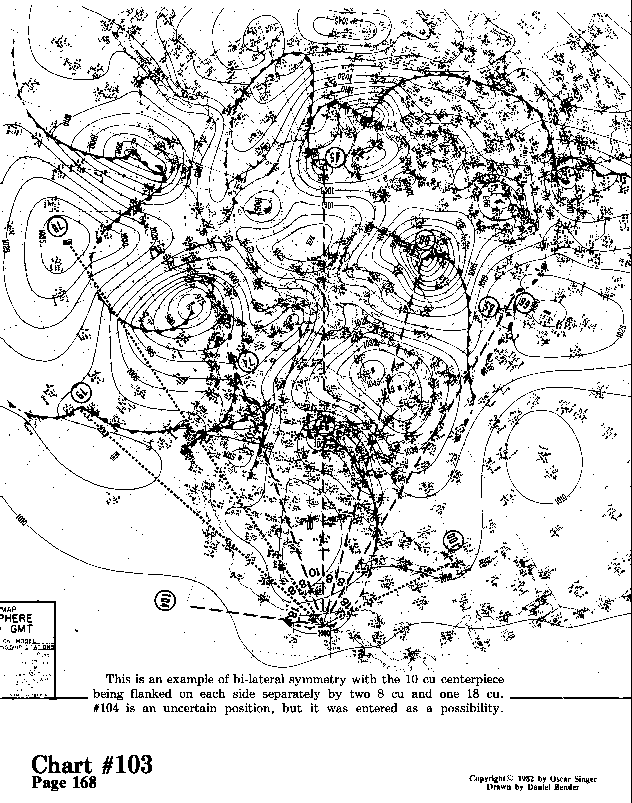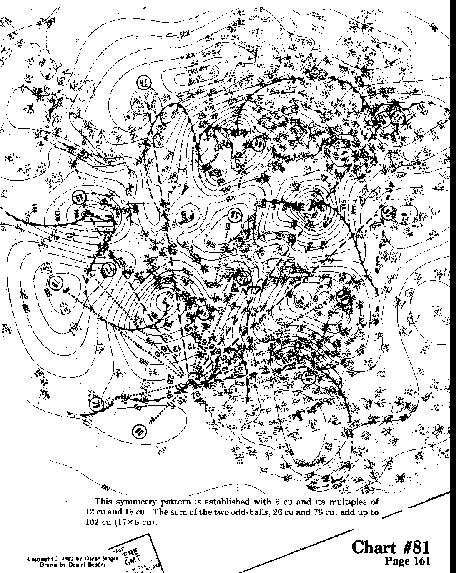

This symmetry pattern is established with 6 cu and its multiples
of 12 cu and 18 cu. The sum of the two oddballs, 26 cu and 76
cu, add up to 102 cu (17x6 cu).

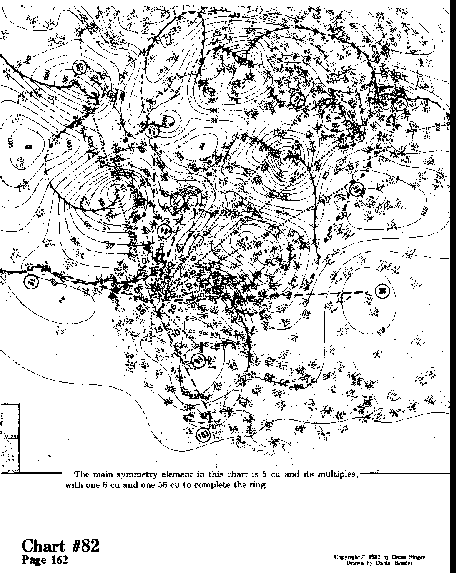
The main symmetry element in this chart is 5 cu and its multiples,
with one 6 cu and one 56 cu to complete the ring.
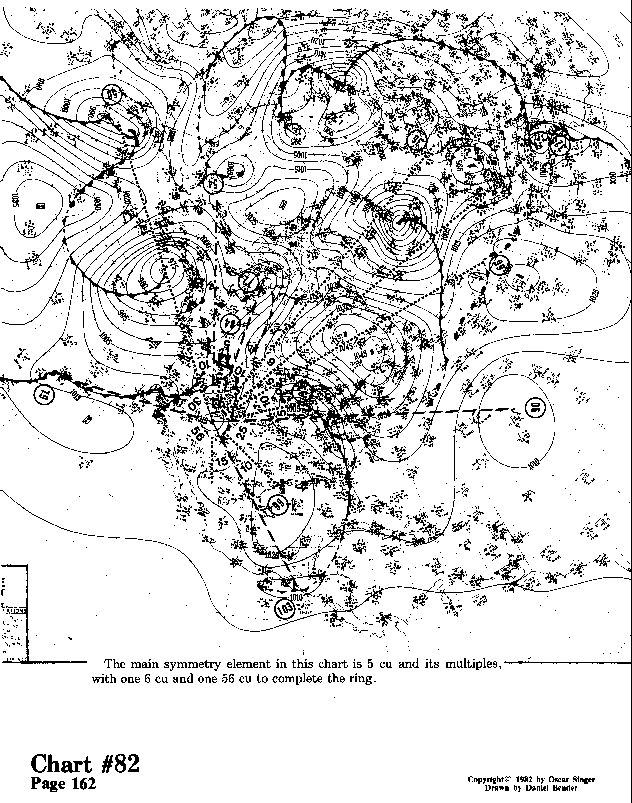
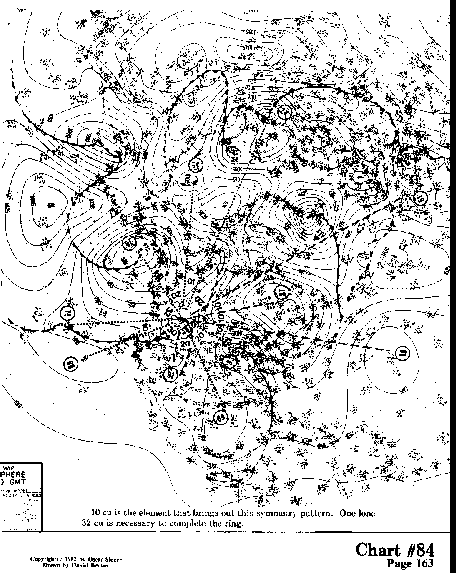
10 cu is the element that brings out this symmetry pattern. One
lone 32 cu is necessary to complete the ring.
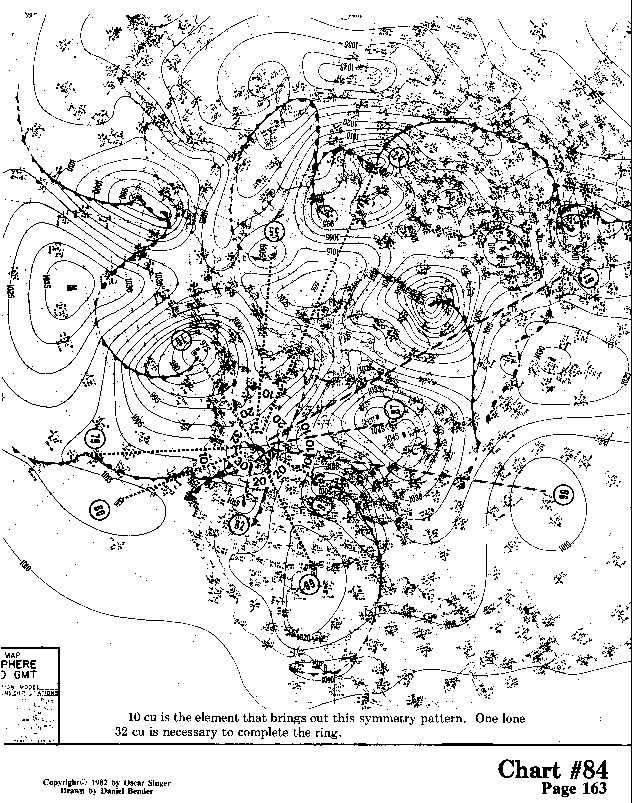
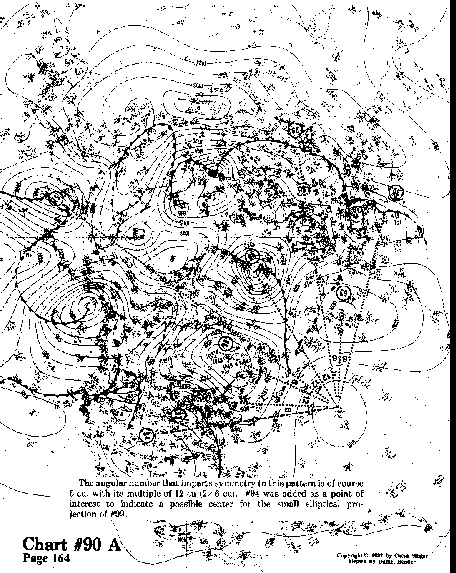
The angular number that imparts symmetry to this pattern is of
course 6 cu, with its multiple of 12 cu (2x6 cu). #94 was added as
a point of interest to indicate a possible center for the small
elliptical projection of #99.
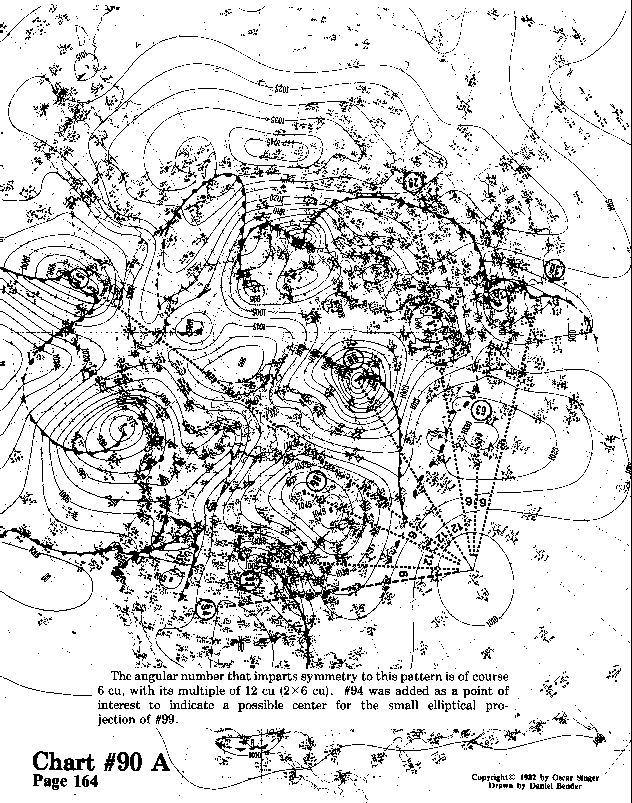
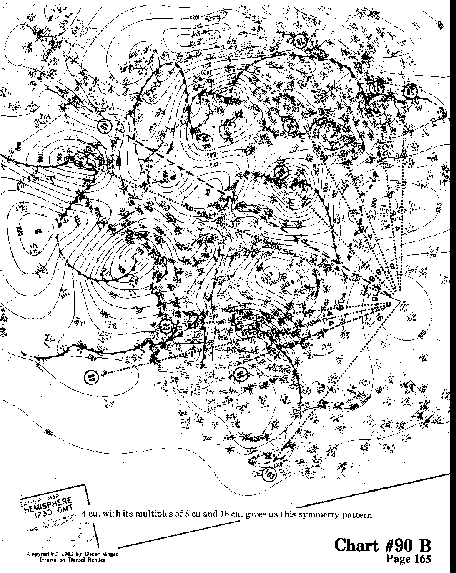
4 cu, with its multiples of 8 cu and 16 cu, gives us this symmetry pattern.
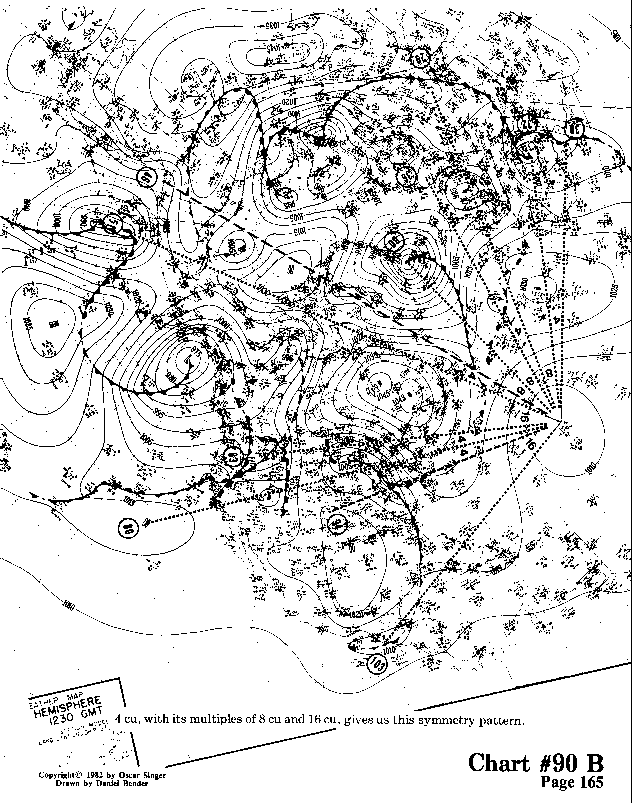
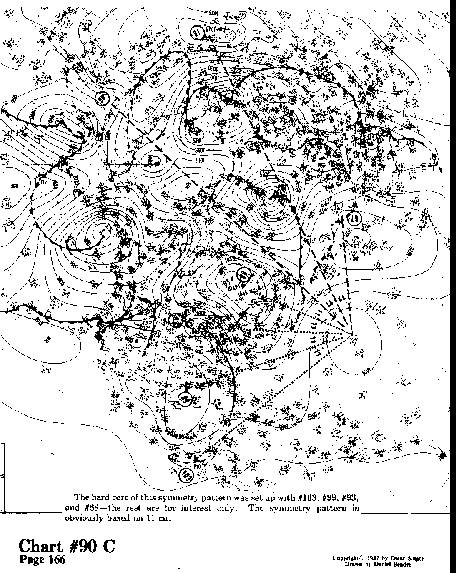
The hard core of this symmetry pattern was set up with #103, #99,
#93, and #88-the rest are for interest only. The symmetry pattern
is obviously based on 11 cu.
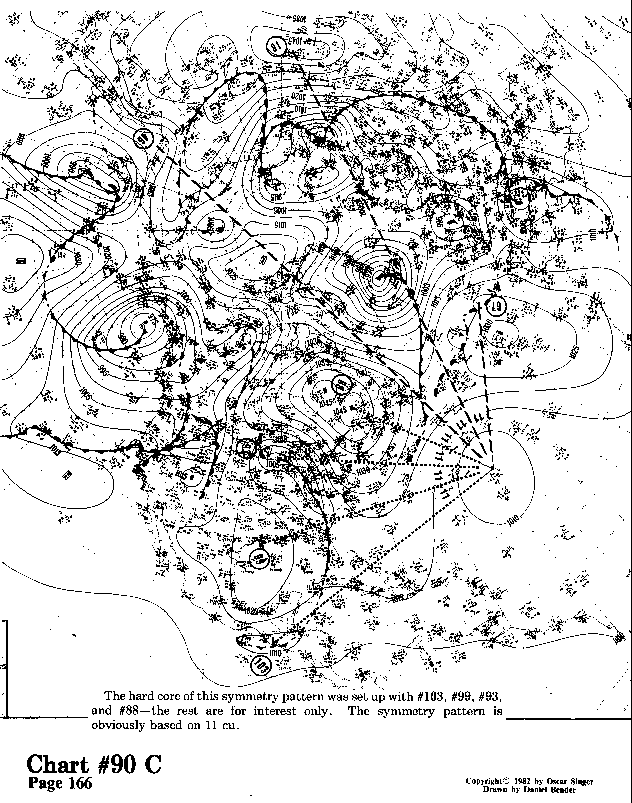
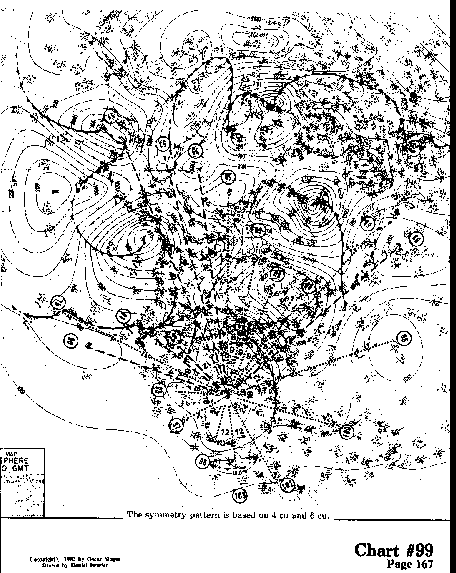
The symmetry pattern is based on 4 cu and 6 cu.
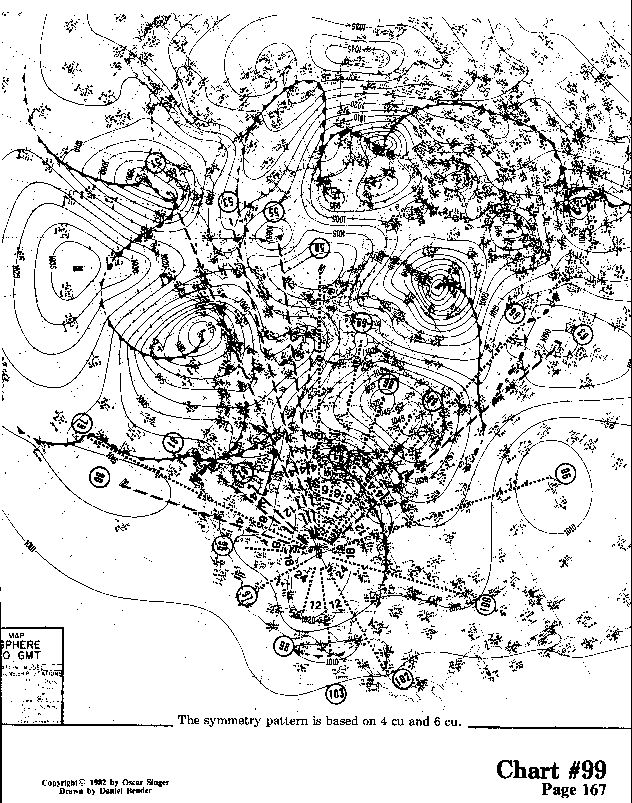
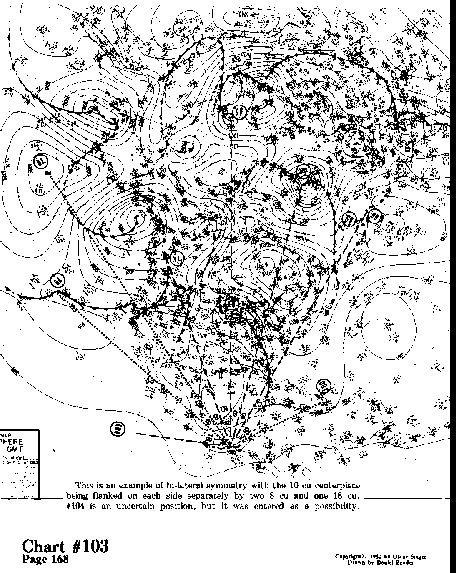
This is an example of bilateral symmetry with the 10 cu centerpiece
being flanked on each side separately by two 8 cu and one 18
cu. #104 is an uncertain position, but it was entered as a possibility.
